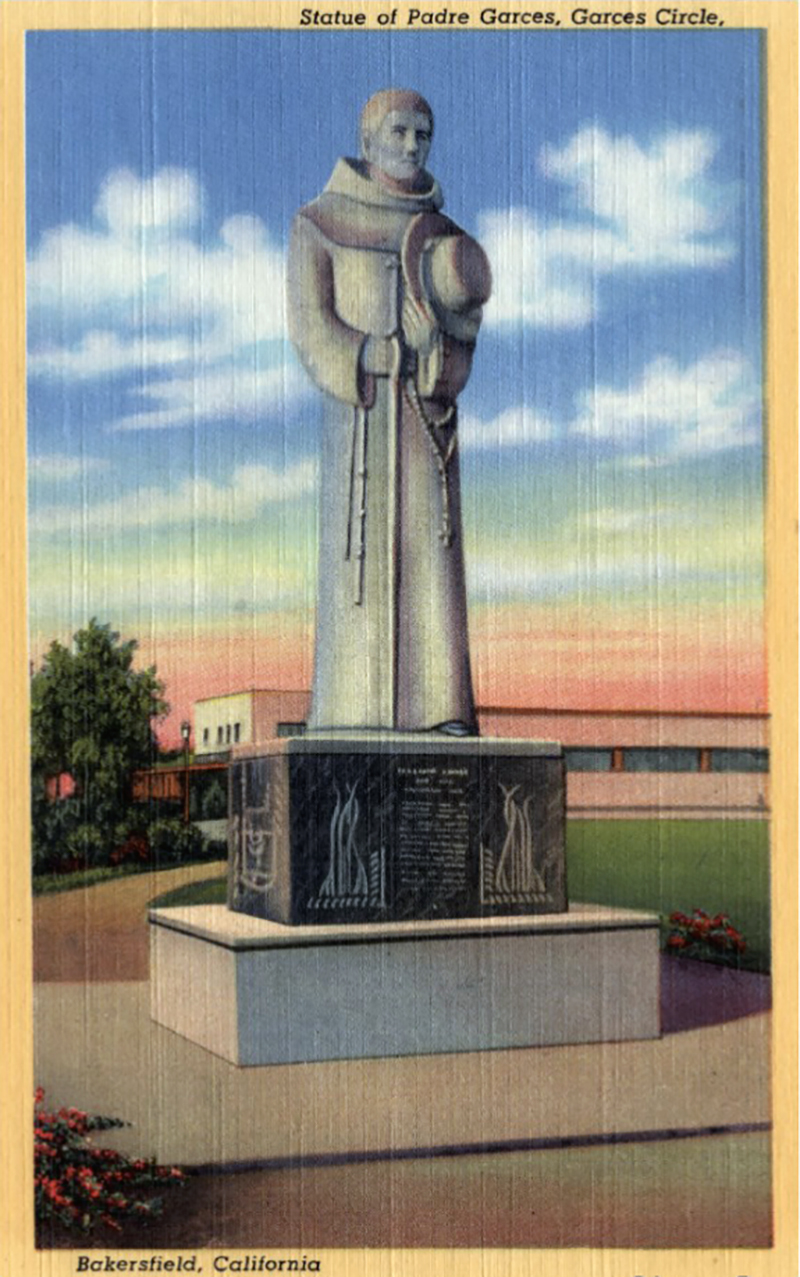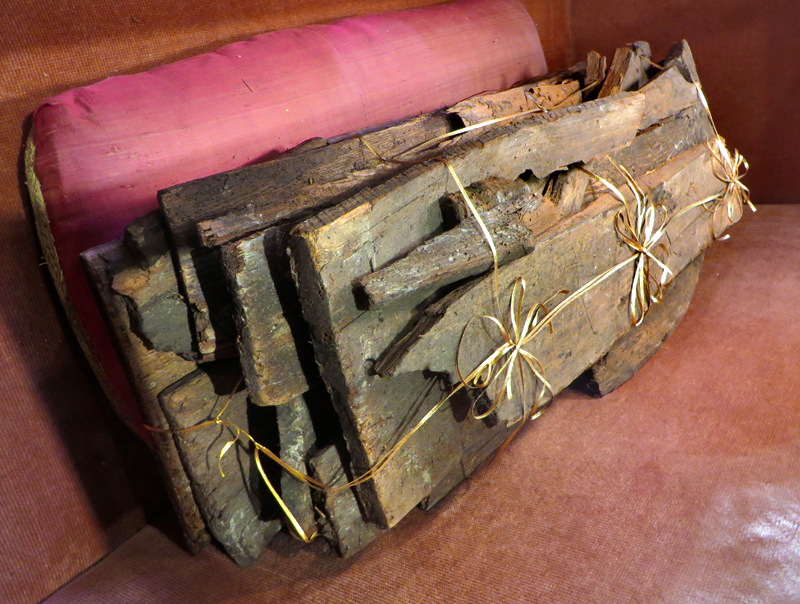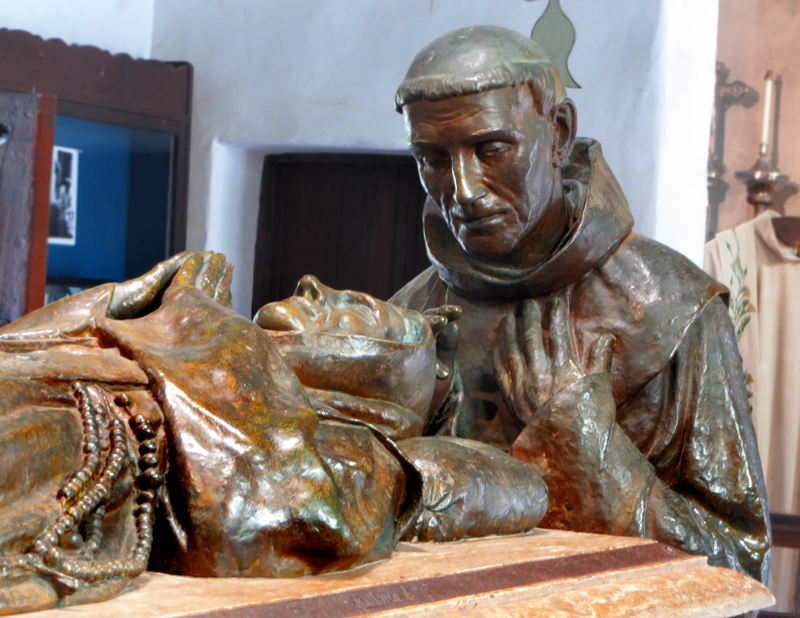|
|
[NEXT][PREVIOUS][CONTENTS][SEARCH]
10: Solitary Hiker
|
As English colonists on the east coast of North America rushed headlong into open rebellion against King George III of England, the Spanish monarch, Don Carlos III, was extending his power throughout California with new missions, presidios and towns. On March 22, 1774, the padres of Mission San Gabriel Arcangel were surprised to find a motley crew of thirty-four leather-jacket soldiers camped at their door, led by a Spanish captain and a Franciscan priest. They had spent three months in the desert proving that a land route from Mexico to the Pacific Ocean was feasible.
After returning to Tubac, in Sonora, Captain Juan Bautista de Anza organized a second expedition which resulted in the founding of San Francisco in March, 1776. Starting out with 240 colonists, De Anza arrived at the bay with 242. One woman had died and three babies were born along the way. The pathfinder for De Anza was Father Francisco Hermenegildo Tomás Garcés, one of the most remarkable explorers in history. Born April 12, 1738 in Zaragoza, Spain, he entered the priesthood at age twenty-five and was assigned to San Xavier de Bac during 1768. Almost immediately he set out on a series of explorations that criss-crossed the old Southwest. On most of these treks he was alone and on foot, living off the land. During the 1776 De Anza expedition, Father Garcés remained with the Yuma Indians on the Colorado River, while settlers went on ahead to establish the village of San Francisco. Becoming intrigued with the extensive trading routes that the "heathen folk" had developed across the Mojave, the padre set off on another journey with four Indian companions who left him near present-day Victorville. Alone, Father Garcés trudged up and over the Cajon Pass, enjoying the view of the vast basin sweeping off into the sea. The solitary hiker spent two days visiting his brethren at Mission San Gabriel, then headed out toward the Encino (now San Fernando) Valley. The climb up the steep-walled mountains that barred the way into the Santa Clara River Valley was the most arduous part of his trip. Generally following the old Portolá route, he clambered down into a plain "with many tall and thick cottonwoods and oaks." The good father walked right into the middle of a full-fledged war raging between the local Tataviam and the coastal Chumash. He spent ten days here, settled the dispute, then wandered up San Francisquito Canyon to Lago Kashtuk, the original Castaic Lake. Crossing the Kern River, he visited Tulare Lake, then followed Fages' route back through Tehachapi Pass and along the Mojave River to the Colorado. Francisco Garcés made a curious note in his journal, remarking that the Santa Clara River flowed at night but dried up during the day. This was in late spring, when the stream should have flowed night and day, swollen with rains. Father Garcés dutifully nurtured his growing colony at the vital Yuma crossing of the Colorado River for the next five years. Finally incensed by the attitude of the soldiers stationed there, the Yumans rose up in fury and killed every Spaniard in sight. On July 18, 1781, the kindly priest was clubbed to death in a wild frenzy. The Yuma chief later had him carefully buried while a native woman planted fragrant chamomile flowers on his grave.
©1998 SANTA CLARITA VALLEY HISTORICAL SOCIETY · RIGHTS RESERVED. |
Story: Rio Santa Clara in Costansó's Diary Perkins Manuscript: Colonization
Junípero Serra (1)
Junípero Serra (2)
Juan Crespí Story
Graves of Serra, Crespí, Lasuen
Serra's Coffin
Serra Cenotaph
Pedro Fages
Fages Marker
Francisco Garcés
Early Afro-Mexican Settlers (Video 2015)
|
The site owner makes no assertions as to ownership of any original copyrights to digitized images. However, these images are intended for Personal or Research use only. Any other kind of use, including but not limited to commercial or scholarly publication in any medium or format, public exhibition, or use online or in a web site, may be subject to additional restrictions including but not limited to the copyrights held by parties other than the site owner. USERS ARE SOLELY RESPONSIBLE for determining the existence of such rights and for obtaining any permissions and/or paying associated fees necessary for the proposed use.










